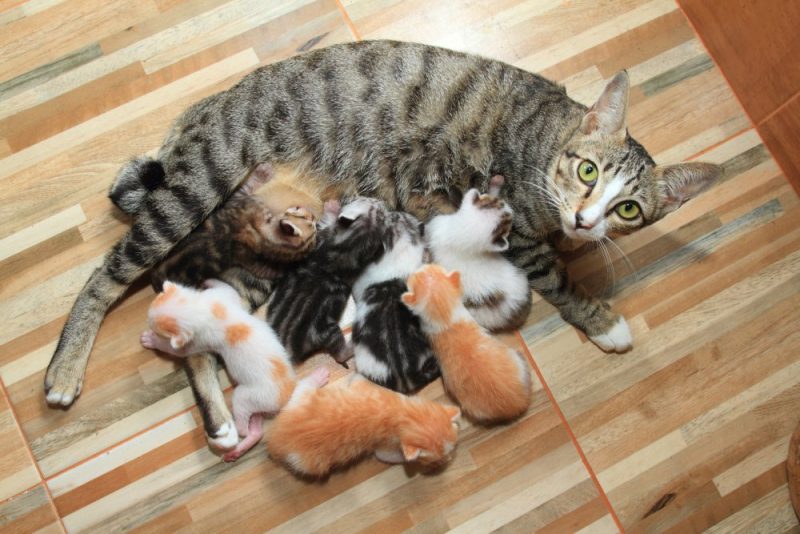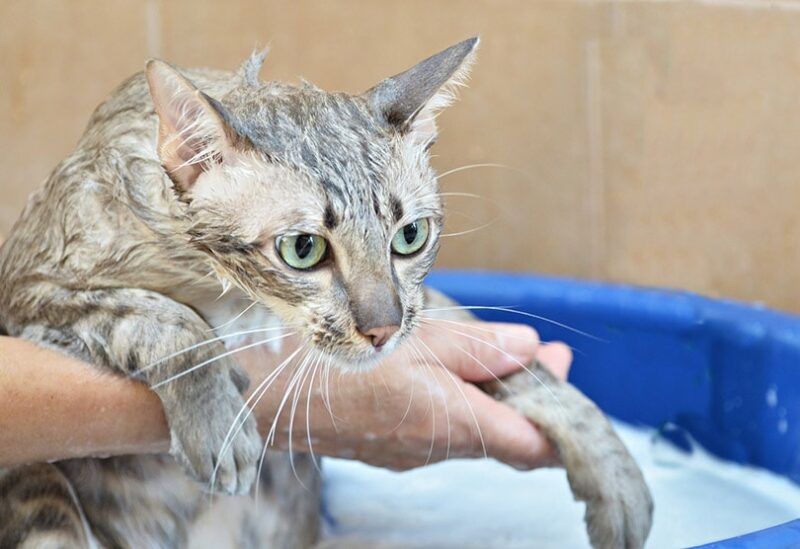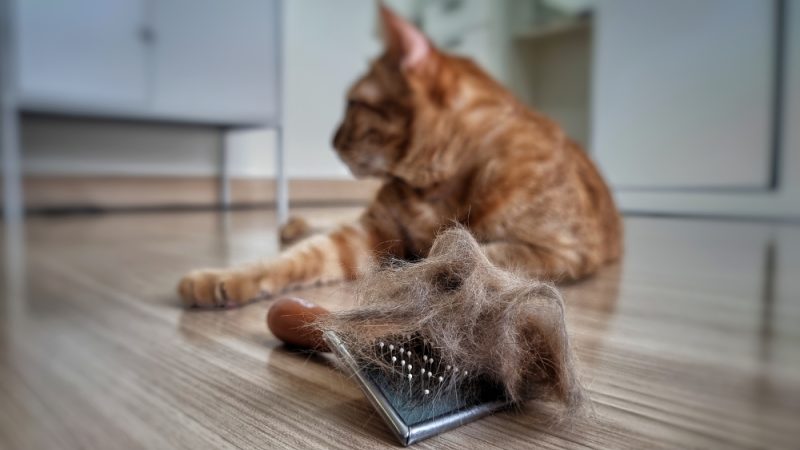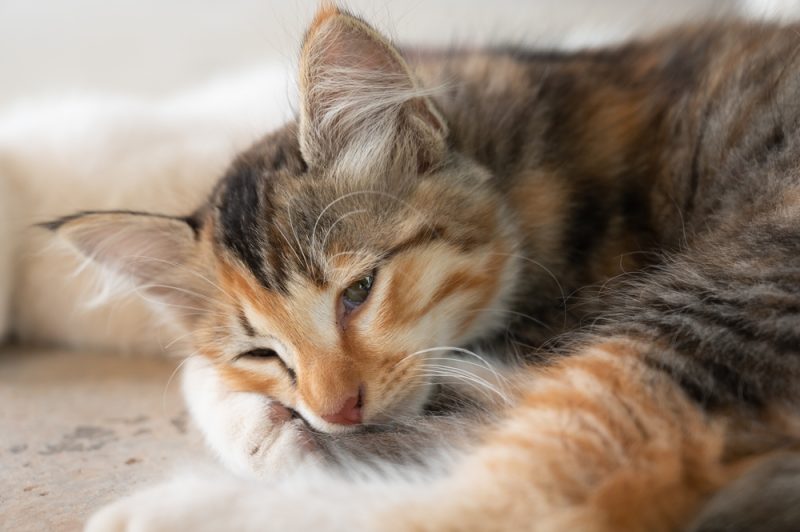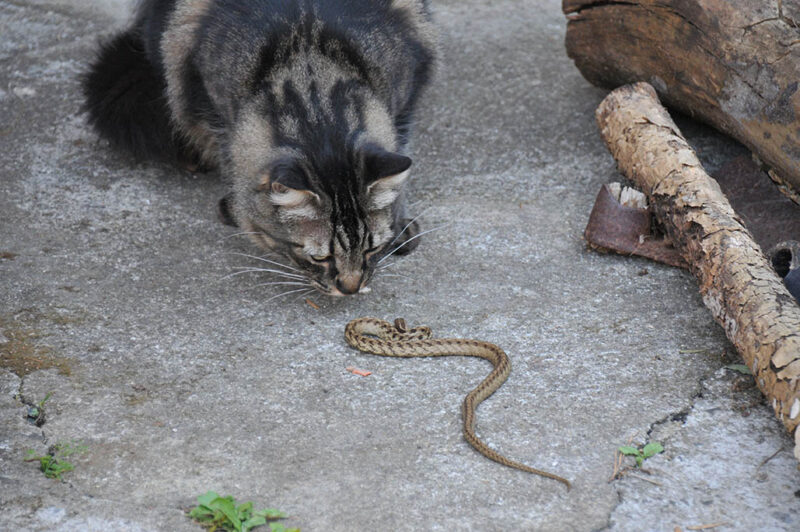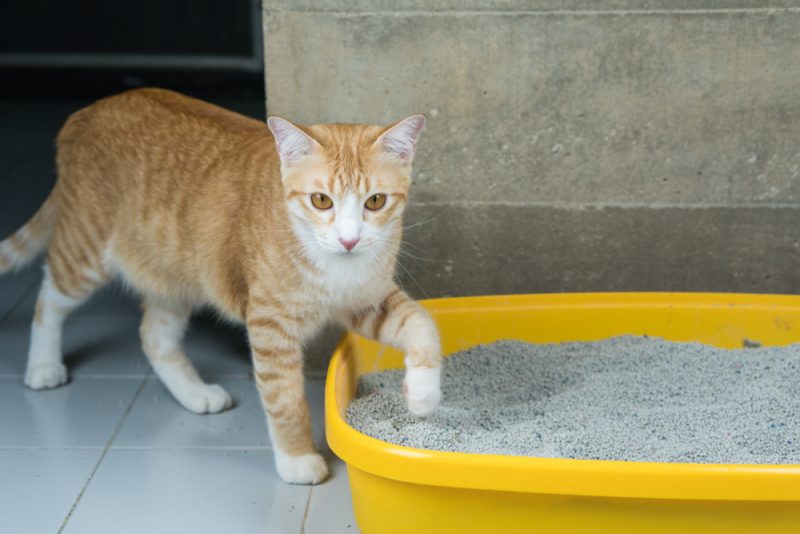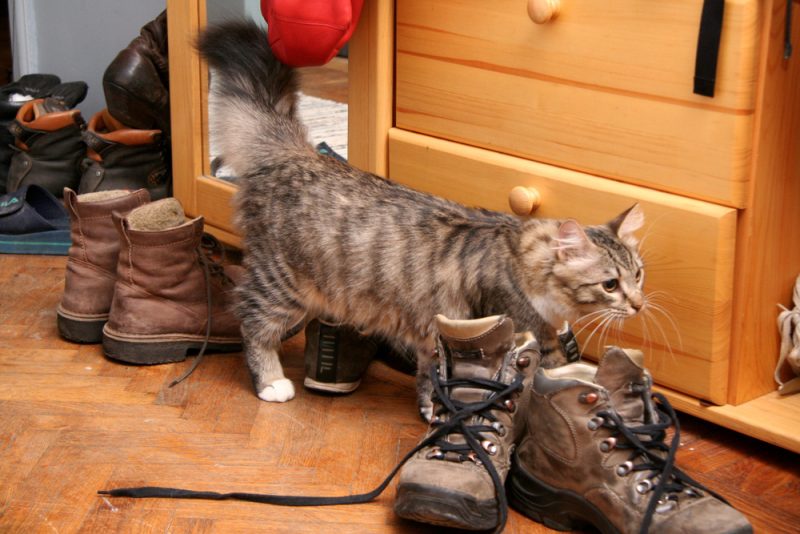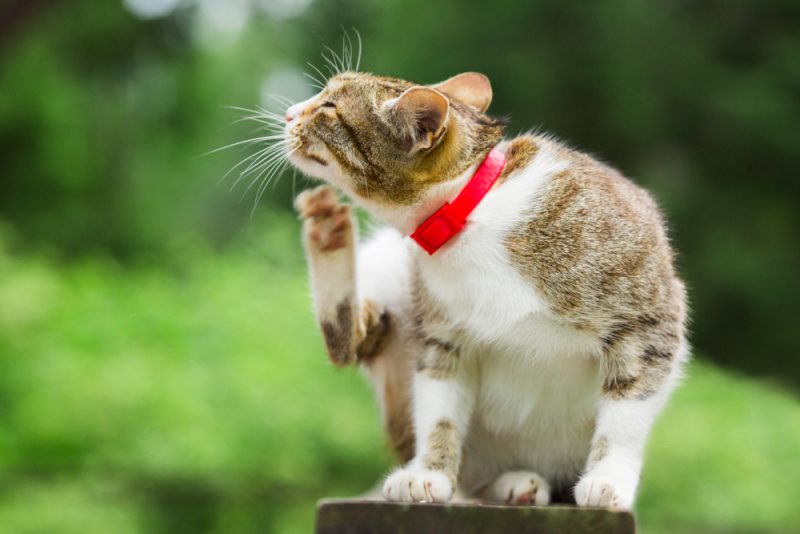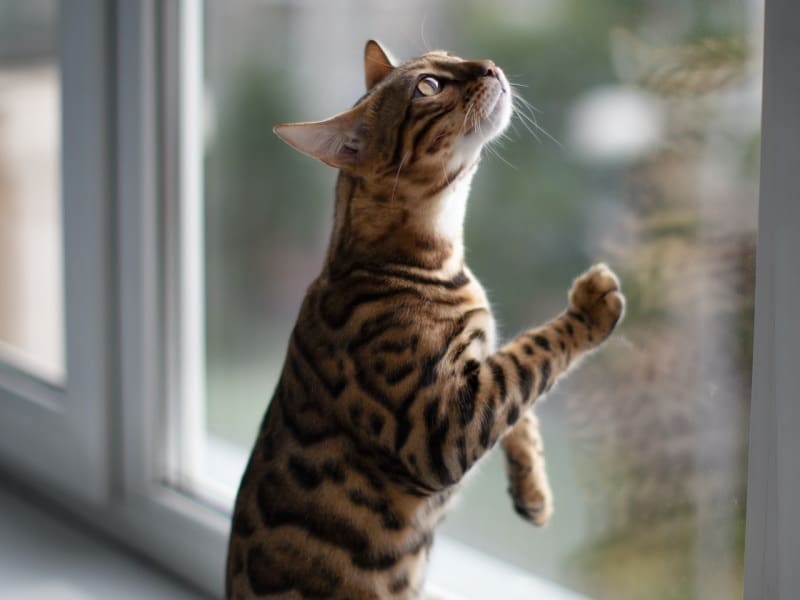In this article
View 2 More +One of the many perks of dog ownership is the feeling of being listened to. “Sit,” “heel,” and “stay” commands bring satisfaction every time that they’re obeyed, but pups show understanding even when we’re venting. They’ll rally through an outburst or offer affection during a breakdown, acting in a way they think is appropriate for their owner. They pay attention and respond accordingly.
And then, there are cats. Lob those same commands you’d use with the dog at a cat, and you’ll hit only a brick wall of stony indifference. Sure, our cats can be affectionate and loving, but almost any feline seemingly couldn’t care less about what you want.
Cats may be able to hear three times better than humans, but they sure can’t listen. If you’re wondering why your calls and commands go unheeded, we’ll explain why cats don’t listen and what you can do about it.

The 6 Reasons Why Cats Don’t Seem to Listen to You
1. Cats Are Independent
Cats can be loyal and loving, but they don’t necessarily rely on their owner in the way we expect from dogs. Studies on pet attachment have shown a significant amount of independence in cats.1 They generally don’t have the same response to their owner leaving as canines, indicating lower levels of security and safety attachment.
Cats don’t always need our reassurance, but they likely still prefer being with people. A later study showed that cats displayed more vocal responses to owners after separation, possibly indicating a desire for socialization and connection with humans.2 The cat’s background as a solitary predator could play a role in their independent personality, while the pack mentality of dogs encourages stronger interdependent relationships.
2. You’re Using the Wrong Tone
You don’t have to speak your cat’s language to make them hear you, but you do have to use the proper tone. A study on how cats respond to different speech patterns showed that they distinguish their owner’s voice and the tones directed at them.3
Just as we use baby talk with infants, we often talk to our cats in a specific voice. Using cat-directed speech in the sing-songy way many naturally use with their pets may also help them understand when to respond. Cats don’t know what words mean, but rather they associate the sounds of words with things, so grabbing their initial attention may hinge on whether you’re using the proper pitch.
In other words, talk to your cat in your distinct cooing voice. There’s no need for embarrassment; it could even influence a stronger bond with your pet.

3. Cats Are Reward-Seeking
One primary reason your cat doesn’t listen is that they aren’t getting the proper rewards. Expecting a cat to do something without making it worth their while will only end in disappointment. But fortunately, reward-seeking also offers hope that your cat is trainable. The trick is finding the perfect treat that will get your cat to pay attention, which isn’t always as easy as it may seem.
4. Your Cat Is Scared
Punishments are counterproductive with cats. Due to their independent nature, they generally won’t try to understand negative cues as a dog would in an attempt to fix the behavior and please you. Instead, your cat might ignore you.
Yelling, spraying with water, or swatting could put your cat on the defensive, making them view you as a potential threat to avoid. We should ignore or redirect poor behavior so we can reward our cats later. Punishments will often only lead to trust issues that will be an obstacle to overcome before you can hope to work on listening skills.
5. Your Cat Is Sick
If your cat is suddenly not listening to you and there is no novel stressor in the house, such as a new pet or a change in routine, your cat may be sick.
Cats hide illnesses and injuries as a natural way of protecting themselves. Consider any new stimuli affecting their behavior to rule out any transient agitation. If nothing has changed yet, and your cat isn’t following the rules, acting sociable, or behaving normally, it could be worth discussing with your vet.
Old age, injury, and disease or infections may be causing discomfort or anxiety. Making adjustments to keep them comfortable will ensure they listen as well as possible and keep your frustration to a minimum.

6. It’s Just Cat Behavior (They Choose to Ignore Us!)
An interesting study showed that a cat can, in fact, recognize their owner’s voice and tell it apart from strangers’ voices. In fact, another study from the same team found that cats can recognize their names and respond with an orienting response, such as moving their ears or head. However, cats sometimes simply choose to ignore us! So, they do listen; they just choose to pretend that they don’t!

What to Do When Your Cat Doesn’t Listen
A misbehaving cat can drive you up the wall, but it’s crucial to avoid letting your anger or frustration boil over when they start knocking plants off shelves and cups off tables. Cats aren’t trying to be malicious. They only do what comes naturally or try to communicate in unique, albeit irritating, ways.
When they act up, don’t squirt your cats with spray bottles, yell at them, or act domineering. Abuse will make your cat more stressed and scared, and directing the desirable behavior will only be more difficult.
Instead, focus on positive reinforcement and redirection. Promote only good behaviors instead of punishing bad ones. Rewards like treats, affection, toys, and playtime are excellent starting points. Cats can be highly receptive and even easy to train when they have incentives and feel comfortable. Try to find out the best times that they are “in the mood.” With cats, things like training can happen, but they usually happen on their terms, when they feel like it.
Adjust the Environment
Cats have the instinct to claw, climb, and wreak havoc in several ways. Rather than constantly managing the behavior, having an accommodating environment will push more favorable actions. Set up a scratching post to keep your cat off the furniture, or get them a cat tree if they’re always on your desk. Give your cat plenty of toys and distractions to keep them from misbehaving.
Make sure your cat enjoys plenty of enrichment and has ways to express their natural behavior. Cats are more likely to listen when they’re comfortable. Acclimating your pet to people and other animals at a young age will be crucial in easing communication issues.
Looking for toys that will cater to the many needs of your cat? The Hepper Hi-lo Cat Scratcher is one of our favorite cat products, and it will encourage your cat to get active. Its clever three-angle design offers multiple ways for your cat to climb, stretch, and exercise. Made of a sturdy plywood base and a replacement cardboard insert, this scratcher is an option that cats can enjoy for years to come. If your cat requires a little encouragement for self-play, the Hepper Catnip Mice Toy Set is a fantastic choice for their instinctual needs. Made with natural, bite-resistant hessian fabric and filled with organic catnip. Cats can satisfy their natural prey instincts while getting the physical activity they need to thrive. At Catster, we've admired Hepper for many years, and decided to take a controlling ownership interest so that we could benefit from the outstanding designs of this cool cat company!
Image
Product
Details
Great for Exercise

Hepper Hi-Lo Cat Scratcher
Check Price
Encourages Self-Play

Hepper Catnip Mice Toy Set
Check Price

How Do You Train a Cat That Doesn’t Listen?
Train your cat to follow commands and establish proper behaviors by setting up a reward system. Keep your cat’s treats or toys handy, and be ready to endorse positive habits as you see them. It takes time and trust, so maintaining positivity and patience will be essential to getting results. But if you put the effort into learning about your cat’s motivations and stay consistent, you should establish an effective dynamic with your pet.
Clicker Method
The clicker method is a standard dog training technique, but many find it equally effective for their cats. With this method, you can teach your cats commands by associating positive behaviors with rewards and a click.
Eventually, the cat connects the action with the click or some other affirmation. Find a quiet room to practice. Keep training sessions short, only about 2–5 minutes, to keep your cat from losing interest.
Start by linking the click to the reward. Click the clicker, and give the cat a treat immediately. Repeat this several times, and you’ll notice your cat reacting to the clicker before getting their snack.
Once your cat develops a solid association, use the clicker to indicate good behaviors. If you say “Down” when your cat is on the counter, click the clicker immediately while the cat is jumping down, and offer a treat.
Over time, you can switch up the rewards so you are not always giving them food. Offer praise, toys, and affection. Eventually, you can stop giving treats (besides every other time) when you use the command; just ensure that the phrase and a cuddle are always given.

Final Thoughts
There are several potential reasons your cat doesn’t listen to you sometimes. Maybe they’re mad that you stepped on their tail, or perhaps you haven’t received the attention they deserve. If your cat is not giving you the time of day, try to fix the relationship, giving them more care and affection to improve your bond. From there, you can help them correct their behaviors.
Featured Image Credit: Kristi Blokhin, Shutterstock




